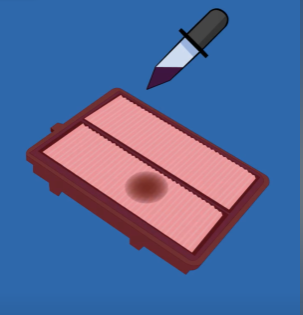Your car’s engine breathes through its air filter — and just like your lungs, it needs clean air to perform at its best. A poor-quality air filter can let harmful particles into the engine, reducing performance, increasing fuel consumption, and even causing long-term damage.
In this guide, we’ll break down how to spot a quality air filter, the materials and technology behind them, and the simple tests you can do to avoid buying a fake or low-grade product.
🔍 1. Check the Packaging and Build Quality
Clear branding and labeling: A genuine filter will have crisp printing, a model number, manufacturing date, and sometimes a QR code for authenticity verification.
Even pleats and clean edges: The filter paper should be evenly folded with no glue overflow or frayed edges.
Seal quality: The rubber or polyurethane sealing ring should be smooth, flexible, and free from cracks.
💡 Tip: If the packaging looks cheap or the printing is blurry, it’s a red flag.
🧻 2. Understand the Filter Material
High-quality filters often use:
High-density wood pulp paper: Offers good filtration at a reasonable cost.
HV (High Volume) filter paper: Often blended with synthetic fibers or glass fibers for superior filtration efficiency and durability.
🧪 3. Simple At-Home Tests
Iodine test: Dab iodine on the filter paper. If it turns blue-black, it may contain starch — a sign of poor quality.


Water soak test: Submerge a small piece of the filter paper in water. Quality paper resists swelling or breaking apart.
⚙️ 4. With or Without Polyurethane?
Polyurethane is commonly used for the filter’s end caps and sealing:
Pros: Excellent sealing, heat resistance, and durability.
Alternatives: Rubber, thermoplastics, or metal end caps can also work well if designed properly.
Bottom line: The absence of polyurethane doesn’t automatically mean poor quality — it depends on the overall design and materials.
📊 5. Performance Indicators
Filtration efficiency: Should block at least 99% of particles down to a few microns.
Dust holding capacity: Higher capacity means longer service life.
Structural strength: Should withstand airflow without collapsing.